Popular Materials for Walk-In Showers
These materials are not just about looks; they also make
sure your shower is strong and lasts a long time.
These materials are not just about looks; they also make
sure your shower is strong and lasts a long time.
Walk-in showers are easy to use and can fit almost any bathroom style.
One of the first things to think about is what they’re made of. In this article, we’re focusing on the most popular materials used for walk-in showers.
From a simple, clean look to something more fancy, these showers can be customized to match what you like. The materials you choose are a big part of this. Some materials are easy to clean, some look really fancy, and others last a really long time.
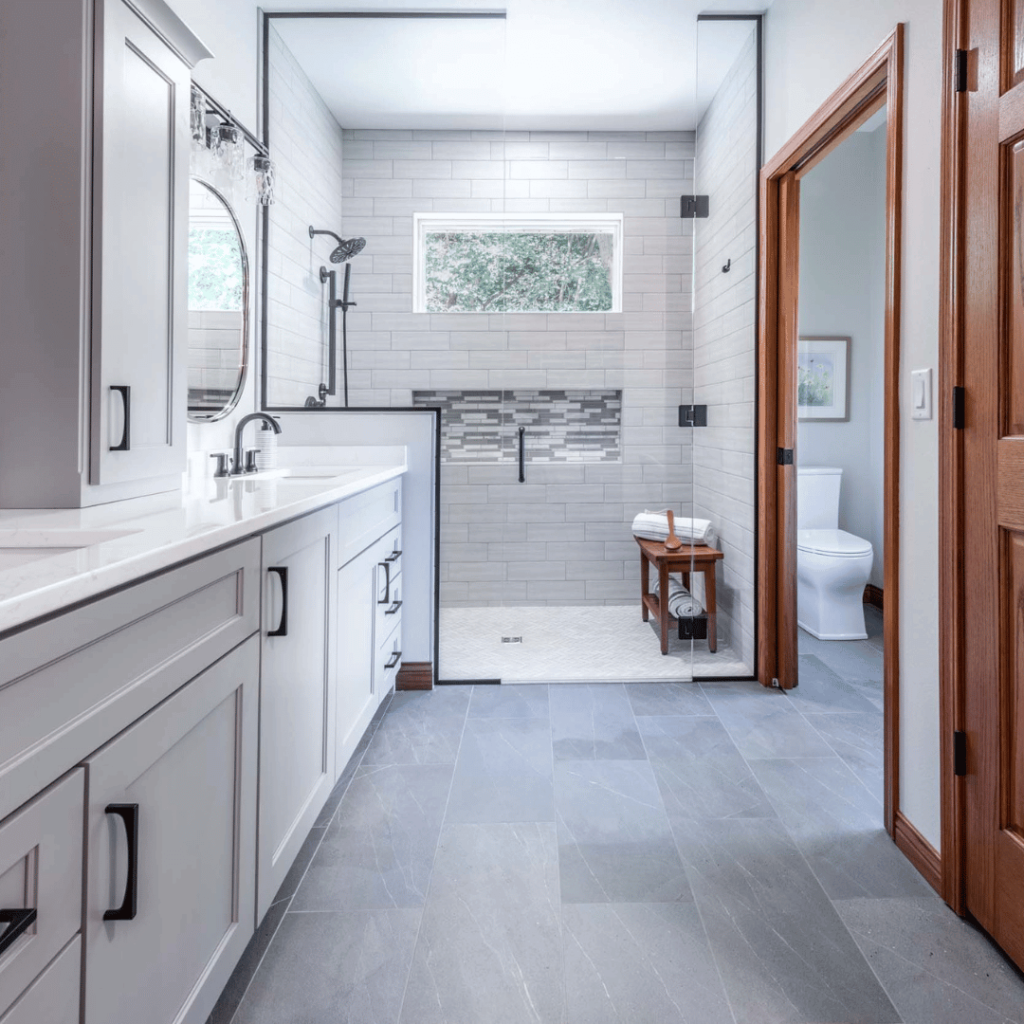
This page discusses various materials used for walk-in showers, their advantages, installation tips, and current design trends.
It covers topics like the benefits of different materials such as ceramic tiles, porcelain tiles, natural stone, glass tiles, acrylic, fiberglass, and solid surface materials.
This article also provides insights into the practicality, aesthetics, and durability of these materials, along with design trends like open-concept showers, smart showers, built-in seats, steam systems, unique tile patterns, and eco-friendly features.
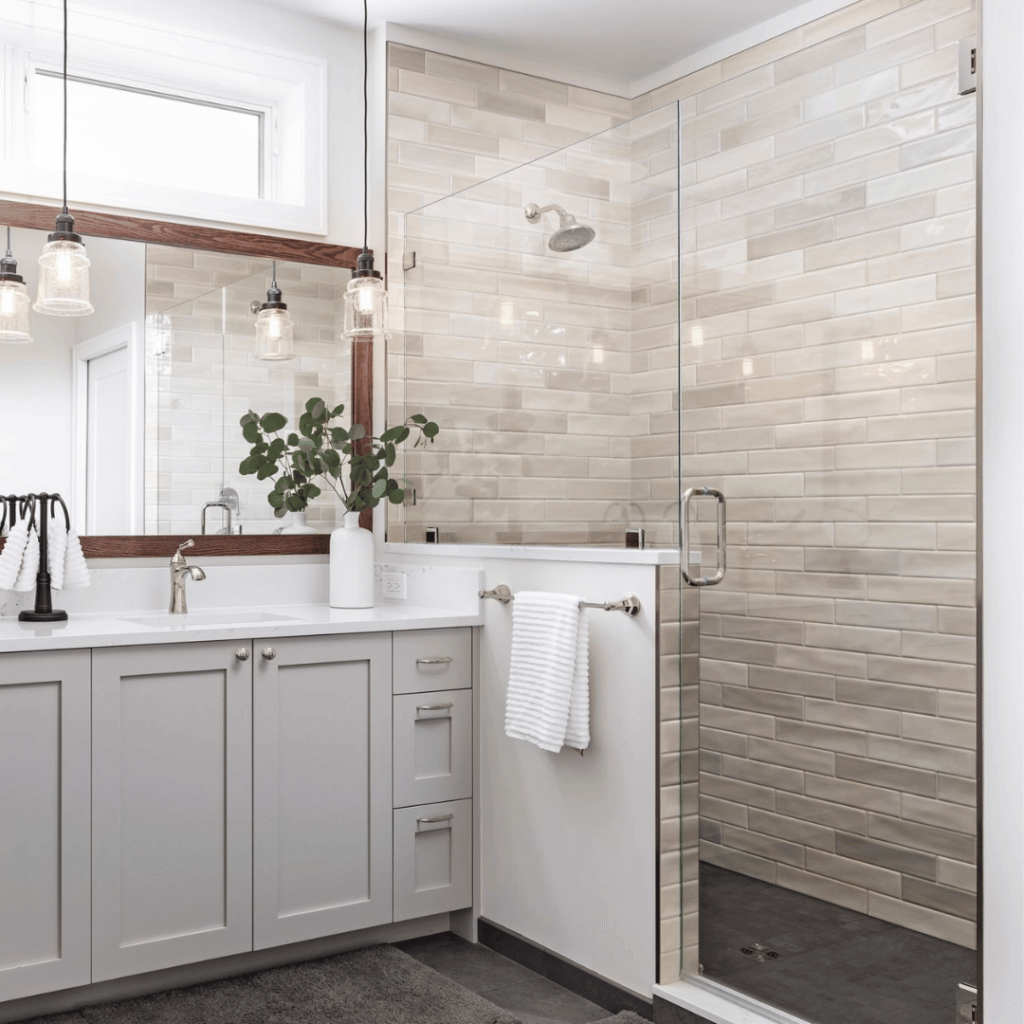
A walk-in shower is a shower that doesn’t need a curtain or a door.
Before we dive into the materials, let’s talk about what walk-in showers are. You just walk right in! It’s different from other showers because it’s open and easy to get into. This makes it a great choice for all kinds of people, especially if you want your bathroom to look modern and sleek.
Walk-in showers are popular because they have a lot of useful advantages. Plus, they are very flexible in design. You can make them fit your space and your style. They’re also really good for people who might find it hard to step over a tub.
Now that we know what walk-in showers are, we can talk about the best materials to use for them. Different materials can make your shower look different and work better. So, it’s important to choose the right ones. Let’s find out what these materials are!
Here are some of the most popular choices.
Now, let’s talk about the materials that make walk-in showers so great. When you choose materials for your shower, think about how they look, how long they last, and how easy they are to clean.
Each of these materials has its own benefits. Some are more about looks, while others are about being easy to use and lasting a long time. Think about what’s most important to you in your bathroom when you pick your materials.
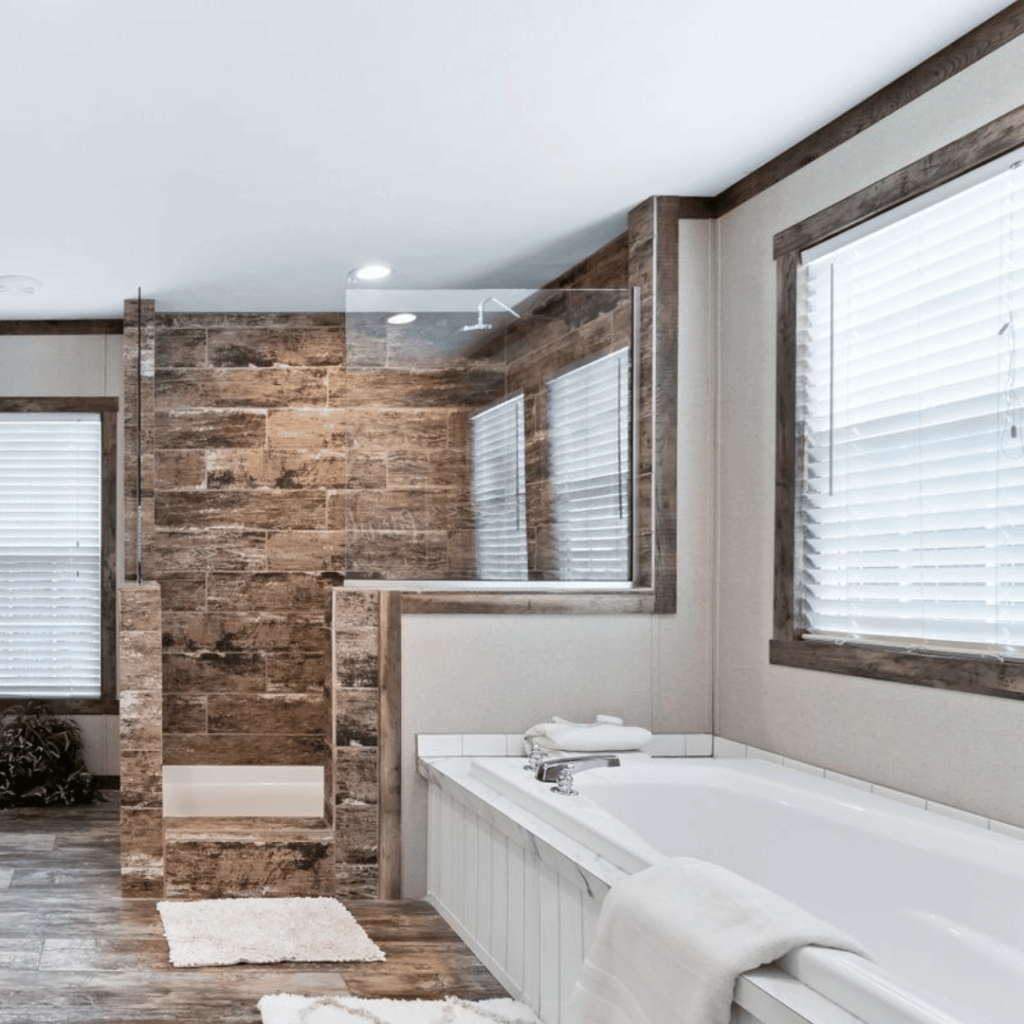
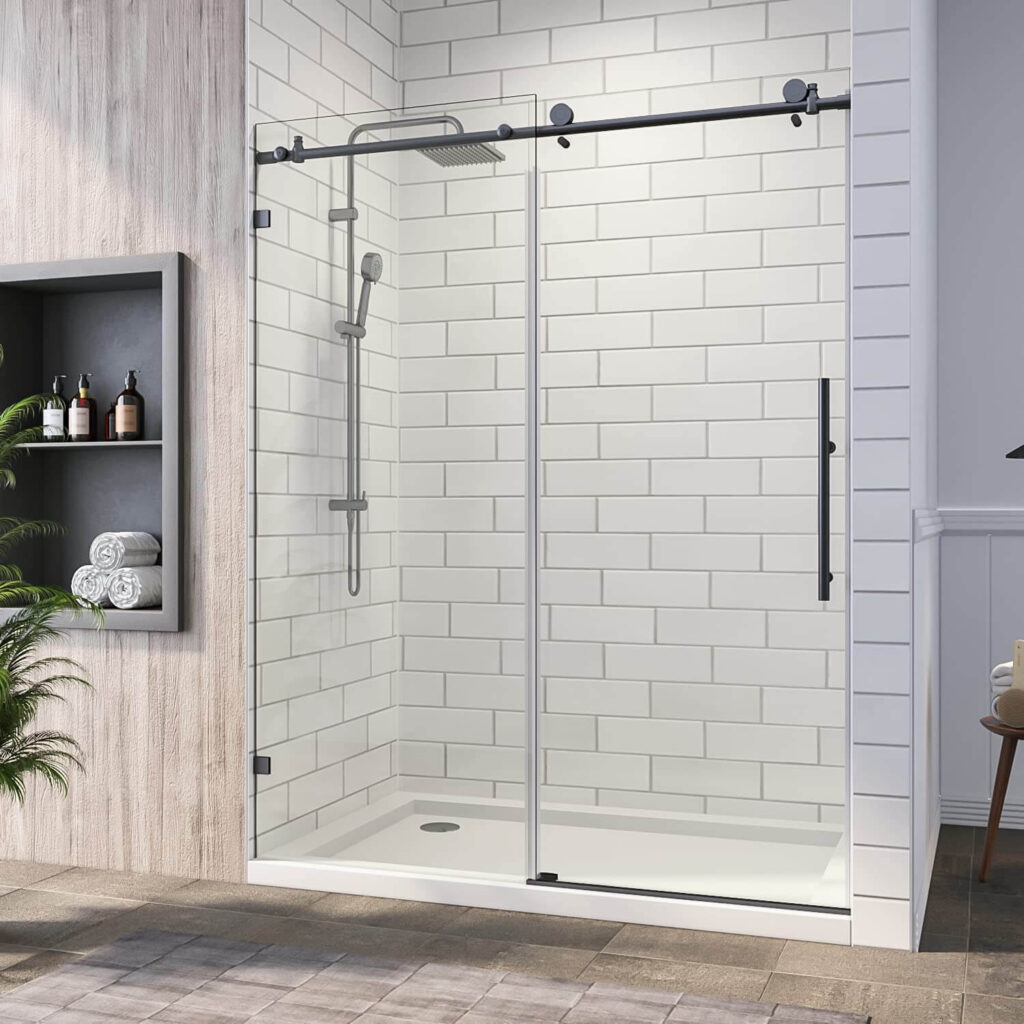
These are really common in showers.
Ceramic tiles are great because they come in lots of colors and patterns. They’re also good for people who don’t want to spend a lot of money but still want a nice shower.
These are like ceramic tiles but even stronger. They’re good at not letting water through, which is important in a shower. Porcelain tiles can be a bit more expensive, but they’re great for a fancy look.
Beautiful and unique designs.
If you want something really special, natural stone like marble or granite might be for you. They look beautiful and are unique, but they can be more expensive and need a bit more care to keep them looking good.
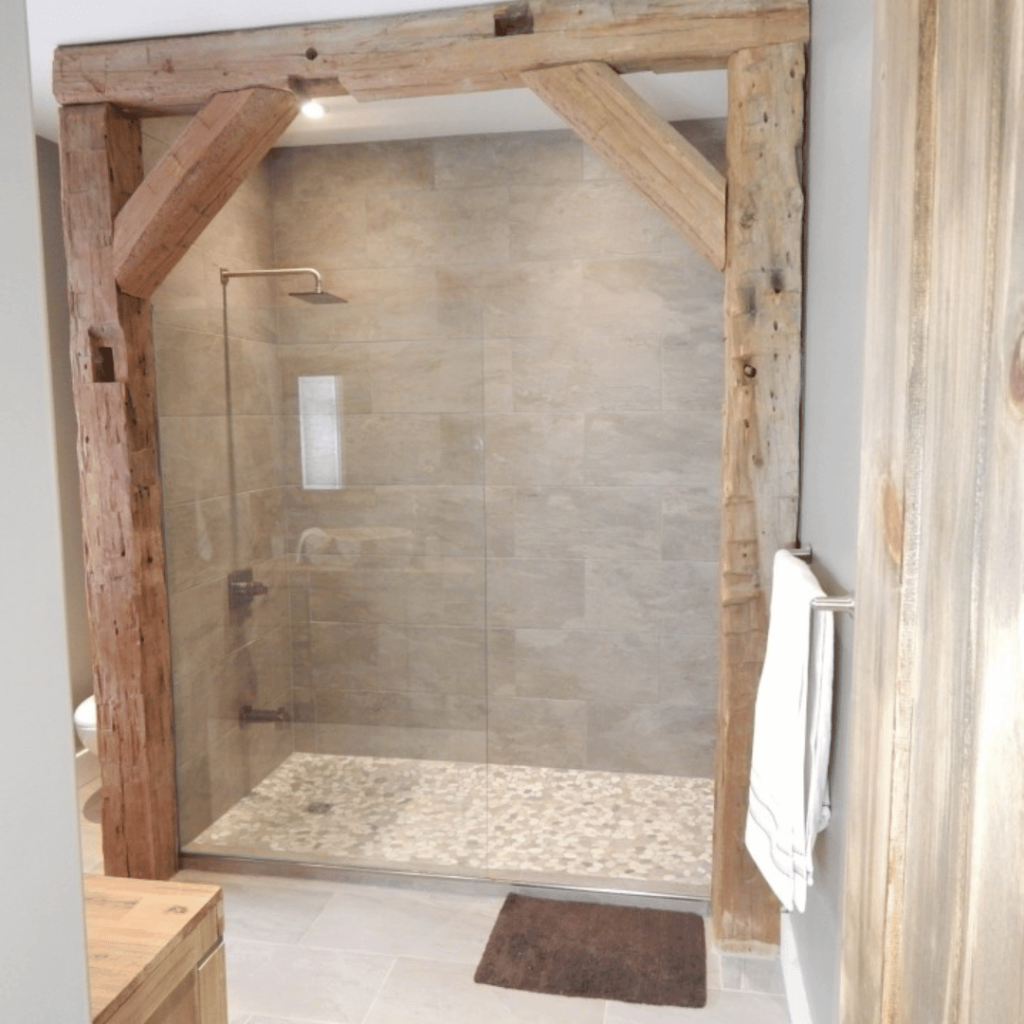
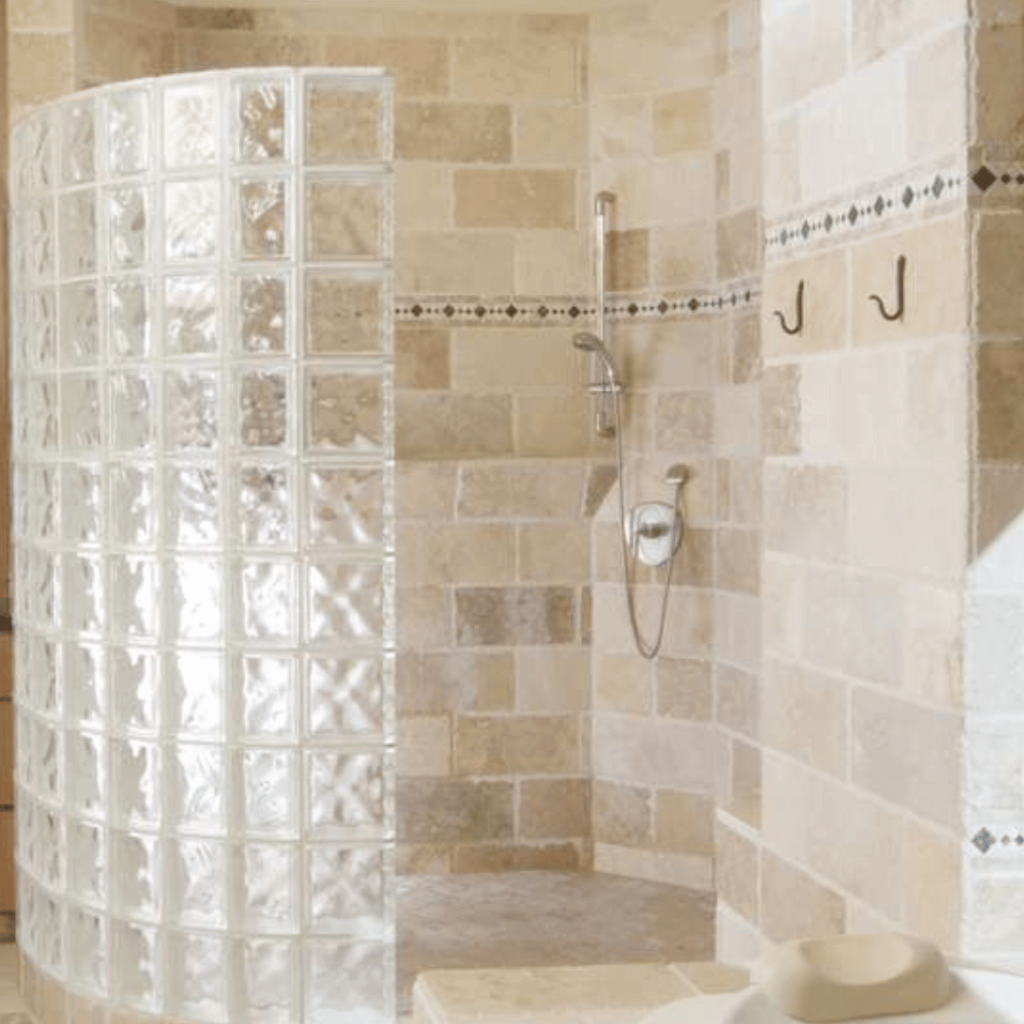
Glass tiles can make your shower look modern and bright. They come in different colors and can make your bathroom feel bigger and lighter.
These are good if you’re on a budget. They’re easy to put in and to keep clean. They might not look as fancy as tiles or stone, but they are practical and work well.
Great for a clean, modern design.
These are made from a mix of materials and can be made to look like one big piece. They’re good for a clean, modern look and are pretty easy to take care of.
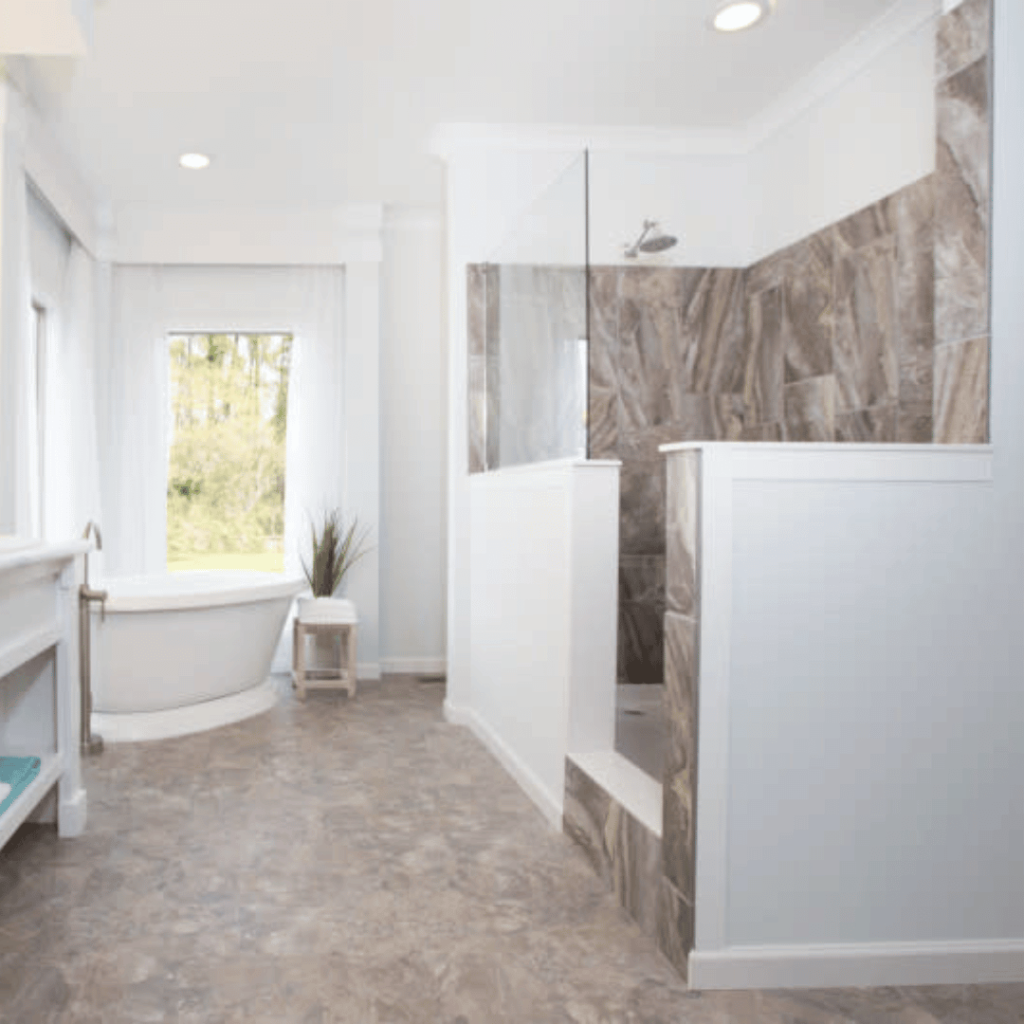
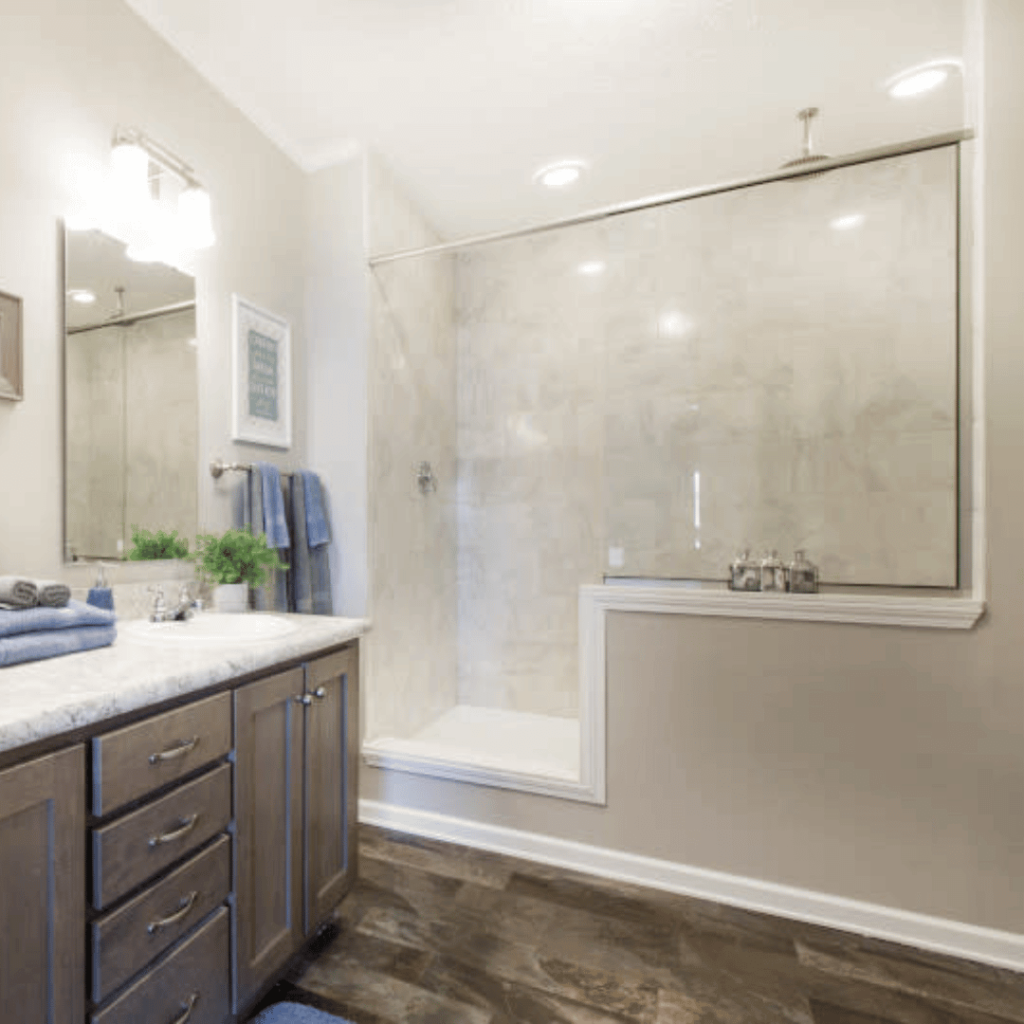
Walk-in showers aren’t just about getting clean; they’re also about style and comfort. Let’s look at some cool trends and new ideas in walk-in shower design.
These trends show that walk-in showers can be about more than just washing up. They can be a place where you enjoy spending time and can be as unique as you are.
These are showers without doors that make your bathroom look really big and open. They’re super stylish and perfect for a modern home.
Imagine being able to start your shower with just your voice or a phone app. Smart showers can do this and more, like controlling the water temperature exactly how you like it.
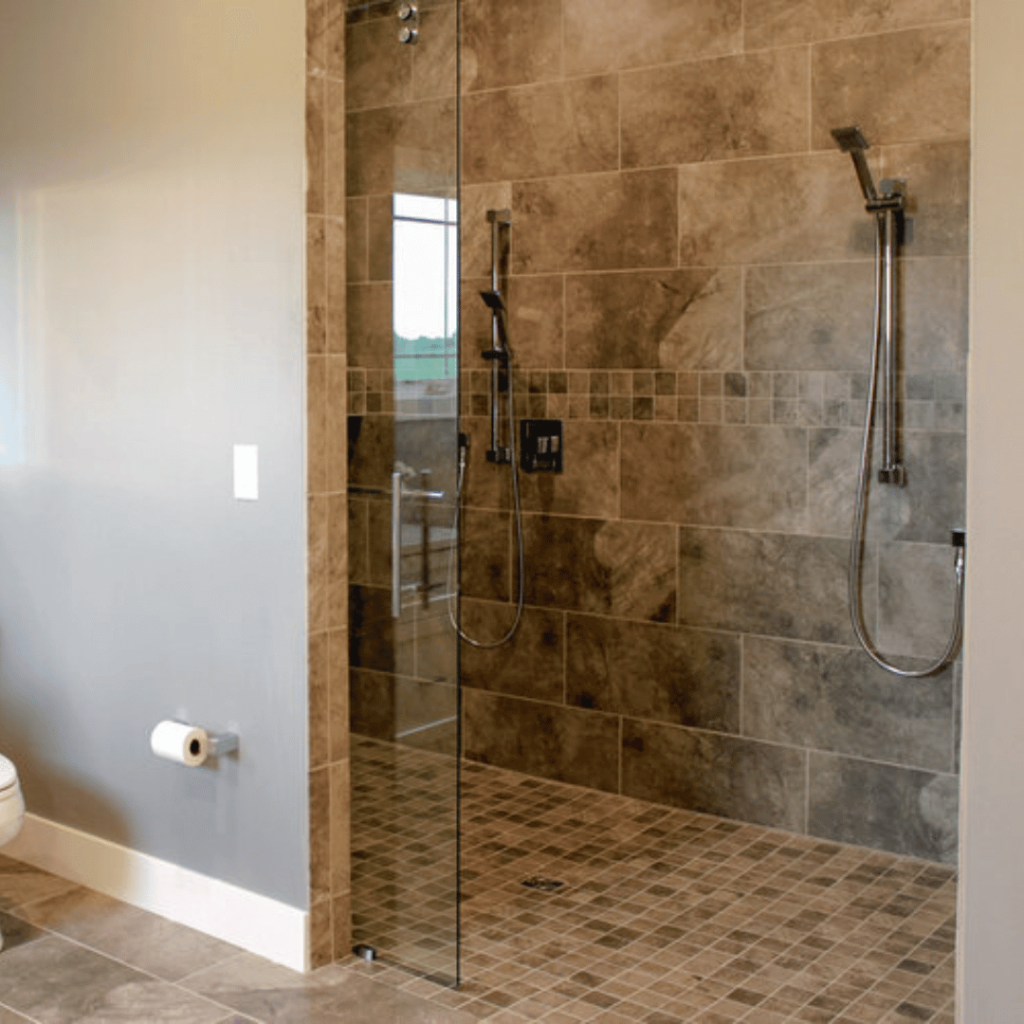
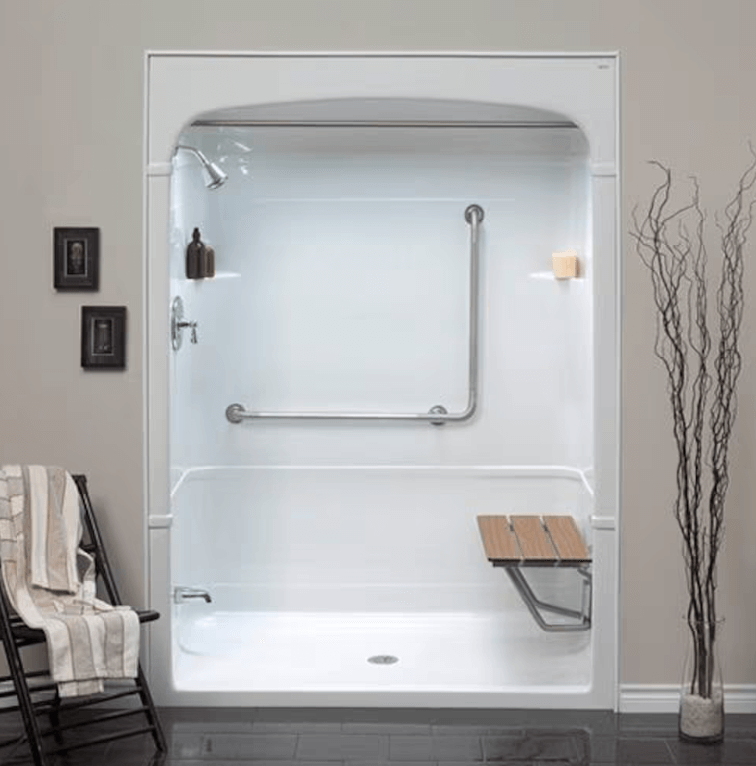
Seats in showers aren’t just for relaxing. They’re great for people who need to sit while showering. Plus, they can be a neat design feature.
Want to turn your shower into a mini-spa? A steam system can do that. It’s like having a sauna in your own bathroom!

Tiles in different colors and shapes can make your shower look really cool. Some people use tiles to make patterns like waves or geometric designs.
Showers that save water and energy are getting popular. They’re good for the planet and can save you money on bills.

Putting in a new walk-in shower is exciting, but there are some important things to think about. Installing a walk-in shower can make a big difference in your bathroom. It’s a project that needs some planning, but the result can be really awesome.
Here’s what you need to know about installing your shower:
Walk-in showers are popular because they are easy to use, can fit any bathroom style, and make the bathroom look more open and modern.
When choosing materials, consider their appearance, how long they last, and how easy they are to clean and maintain.
A walk-in shower is an open shower area that doesn’t require a curtain or door, making it easy to walk into.
Walk-in showers are great for everyone, especially those who want a modern bathroom design and those who find it difficult to step over a tub.
Popular materials include ceramic tiles, porcelain tiles, natural stone, glass tiles, acrylic, fiberglass, and solid surface materials.
For a budget-friendly option, acrylic and fiberglass are great choices as they are cost-effective and easy to maintain.
Current trends include open-concept showers, smart showers, built-in seats, steam systems, unique tile patterns, and eco-friendly features.
To make your walk-in shower eco-friendly, look for water-saving fixtures and materials that are sustainable and energy-efficient.
If you’re not experienced in home improvement, it’s best to hire a professional to ensure proper installation and to handle complex aspects like waterproofing and drainage.
Ensure proper waterproofing by using quality materials and techniques to prevent leaks and water damage. This is often best handled by professionals.
Arizona’s most trusted residential window and bath remodeling company Serving Phoenix, Tucson, and the surrounding areas since 1995.
8399 W Van Buren St, Unit 101
Tolleson, AZ 85353
(602) 780-0559
4755 S Coach Dr.
Tucson, AZ 85714
(520) 748-7292
7946 E Broadway Blvd,
Tucson, AZ 85710
(520) 667-2701
Arizona’s most trusted residential window and bath remodeling company Serving Phoenix, Tucson, and the surrounding areas since 1995.